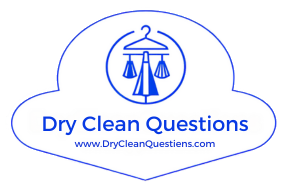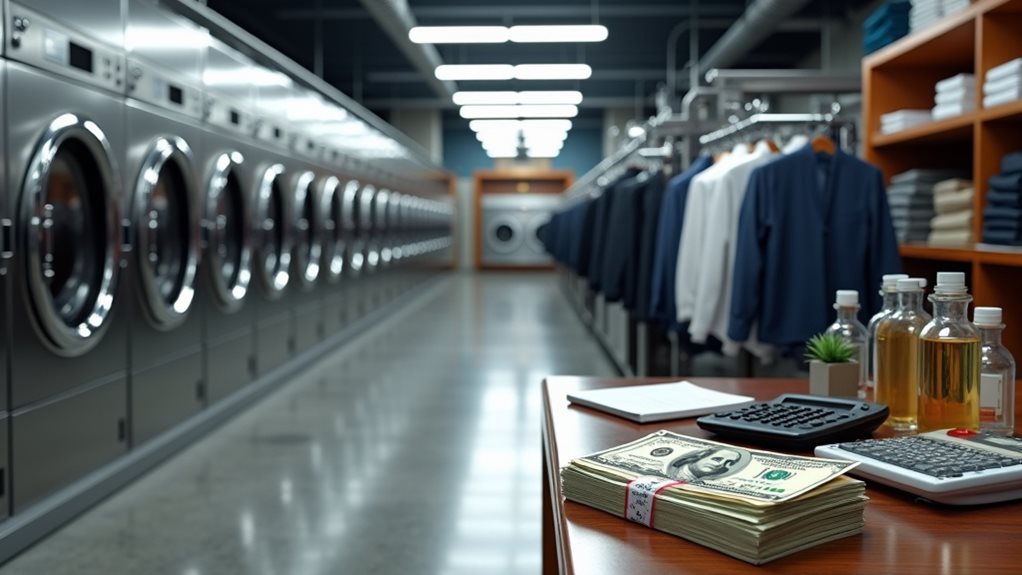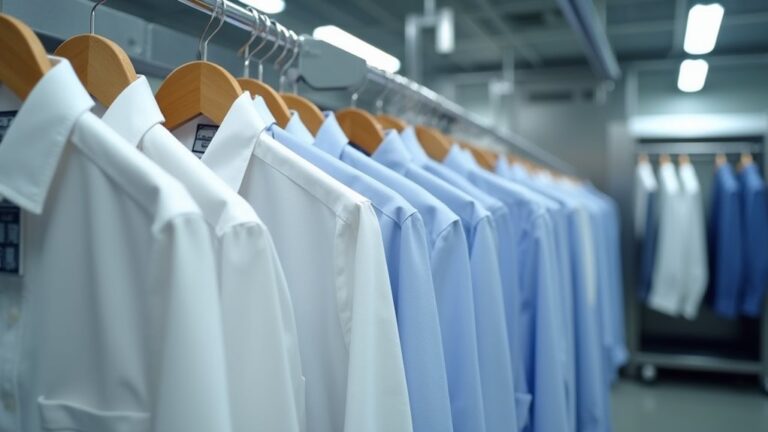You’ll find dry cleaning businesses can be quite profitable when managed well, with net margins typically ranging from 10-25% and annual revenues between $200,000 to over $1 million. Your success depends heavily on location—urban shops average $10,000 monthly while small towns see around $2,000. You’ll need about 2,000 pieces monthly to break even, but premium services like wedding gown cleaning ($50-200+) and commercial contracts provide excellent profit opportunities that’ll transform your bottom line.
Revenue Generation and Pricing Structure in Dry Cleaning
When you’re considering the financial potential of a dry cleaning business, understanding your revenue streams becomes absolutely vital to building a sustainable operation.
Your pricing structure forms the backbone of revenue generation, with basic shirts running $3-7 while complex garments like suits command $10-20.
I’ve learned that additional services, particularly specialized stain removal and expert pressing, create excellent upselling opportunities that boost your bottom line considerably.
Smart operators implement subscription-based packages and loyalty programs, which honestly transform one-time customers into predictable revenue sources 📈.
Professional garment care isn’t just about cleaning methods—it’s about presenting clear pricing that builds customer satisfaction while covering operational costs.
Premium items like wedding gowns can command significantly higher prices ranging from $50-200+, providing substantial profit margins for businesses willing to handle specialty garments.
Customer Segmentation and Market Demand Analysis
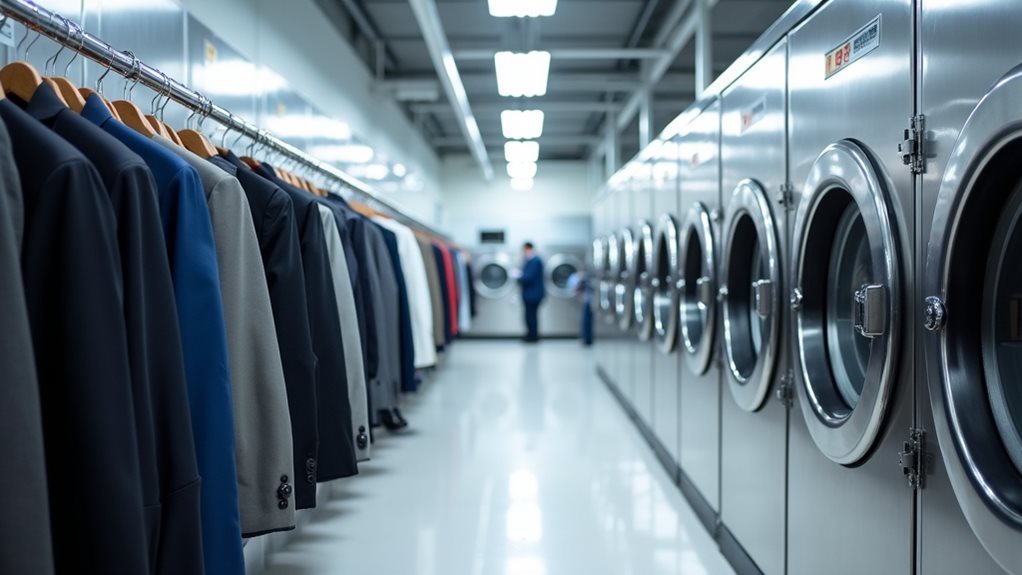
Your pricing strategy means nothing without understanding exactly who walks through your doors, and honestly, I learned this lesson the hard way during my first year when I assumed all customers were the same.
Customer segmentation became my lifeline as a dry cleaning business owner, revealing distinct patterns in customer habits that completely transformed my approach.
Understanding your customers isn’t optional—it’s the difference between guessing at profits and actually making them consistently.
Through proper market demand analysis, I discovered that busy professionals in urban locations craved delivery options and would pay premium prices for convenience, while families prioritized affordability and quick turnaround times.
By tailoring additional services to each segment, like same-day service for executives and bulk discounts for households, I boosted customer loyalty greatly.
Established businesses in affluent neighborhoods often achieve better profitability due to customers willing to pay premium rates for quality service.
This targeted approach improved my profit margins and created that steady income every business owner dreams about.
Operating Expenses and Cost Management Strategies
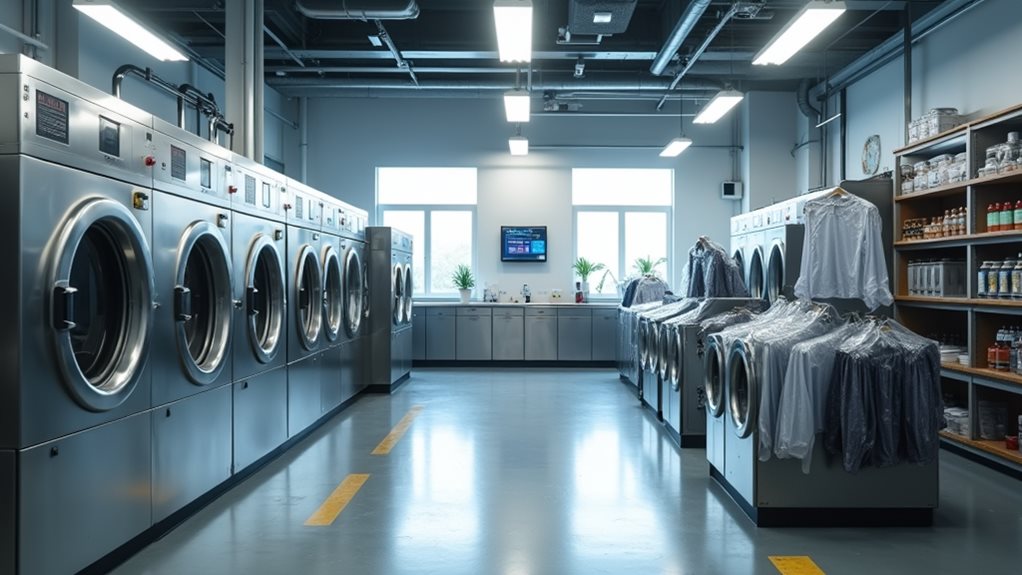
Although I thought I’d everything figured out after mastering customer segmentation, the reality of managing operating expenses hit me like a freight train during my second month when I received utility bills that made my eyes water 💸.
Your dry cleaning business profitability hinges on controlling major operating expenses like chemical solvents, cleaning equipment maintenance, staff wages, and those sneaky utility costs that creep up faster than you’d expect.
I learned that effective cost management means negotiating with suppliers, monitoring marketing costs religiously, and maintaining equipment before breakdowns drain your budget.
With profit margins typically ranging 10-25% net, you’ll need to process around 2,000 pieces monthly just to break even on $10,000 in fixed expenses—trust me, every dollar counts.
Many successful operators boost their bottom line by offering additional services like alterations, shoe repair, or laundry services to supplement their core dry cleaning revenue.
Profit Margins and Financial Performance Metrics

Understanding these operating costs sets the foundation for grasping the real numbers that’ll determine whether you’re driving a Honda or a Mercedes next year 🚗.
Dry cleaning businesses typically enjoy gross profit margins between 30-50%, which honestly impressed me when I first discovered this industry. Your net profit margins will likely land between 10-25%, depending on your effective business management skills and costs associated with your operation.
These profit margins honestly blew me away when I started researching this business opportunity.
Monthly revenues swing wildly based on location—small towns might generate $2,000 while metropolitan areas can hit $30,000.
Here’s the reality check: you’ll need roughly 2,000 pieces monthly to reach your breakeven point.
Focus on exceptional customer service, because financial performance in this business hinges on building loyal relationships that generate consistent revenue streams. Small independent shops typically generate annual revenues between $200,000 to $500,000, though premium locations can push successful operations to $1 million or more annually.
Factors That Impact Long-Term Profitability
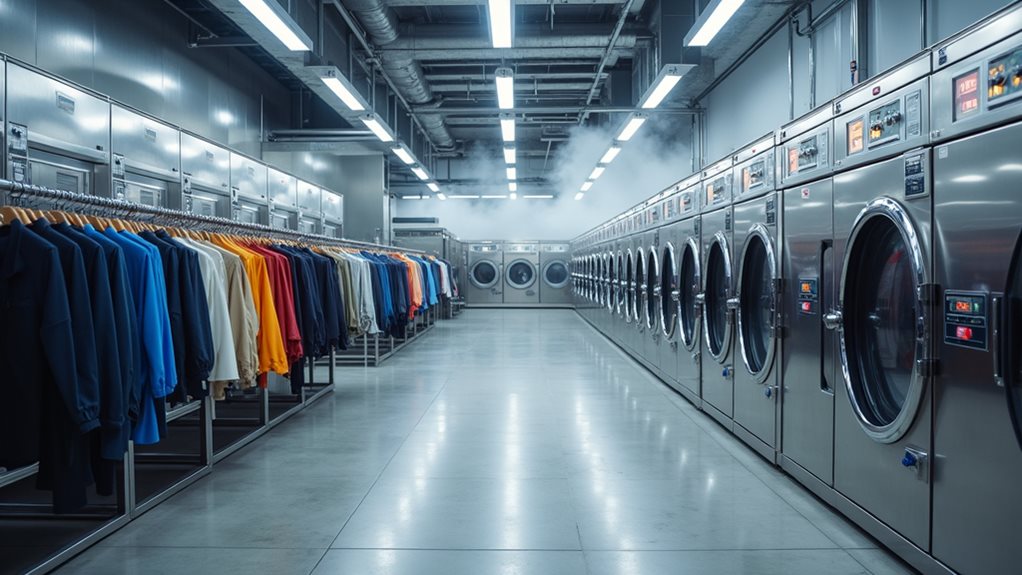
While I’ve watched countless dry cleaning businesses flourish and fail over the years, I’ve noticed that long-term profitability isn’t just about nailing your monthly numbers—it’s about understanding the deeper forces that’ll either propel your business forward or slowly drain your bank account 💸.
Your location absolutely dominates everything, with urban locations pulling in roughly $10,000 monthly revenue compared to small towns scraping by with $2,000.
Smart owners diversify through additional services like pickup, delivery, and alterations, which dramatically boost customer retention while giving you that competitive edge.
Cost management becomes your lifeline when market dynamics shift, and honestly, embracing eco-friendly practices isn’t just trendy—it’s crucial for securing profitability in today’s environmentally conscious world.
The industry has also adapted to serve commercial clients like hotels and healthcare facilities, which can provide more stable revenue streams compared to relying solely on individual consumers.
